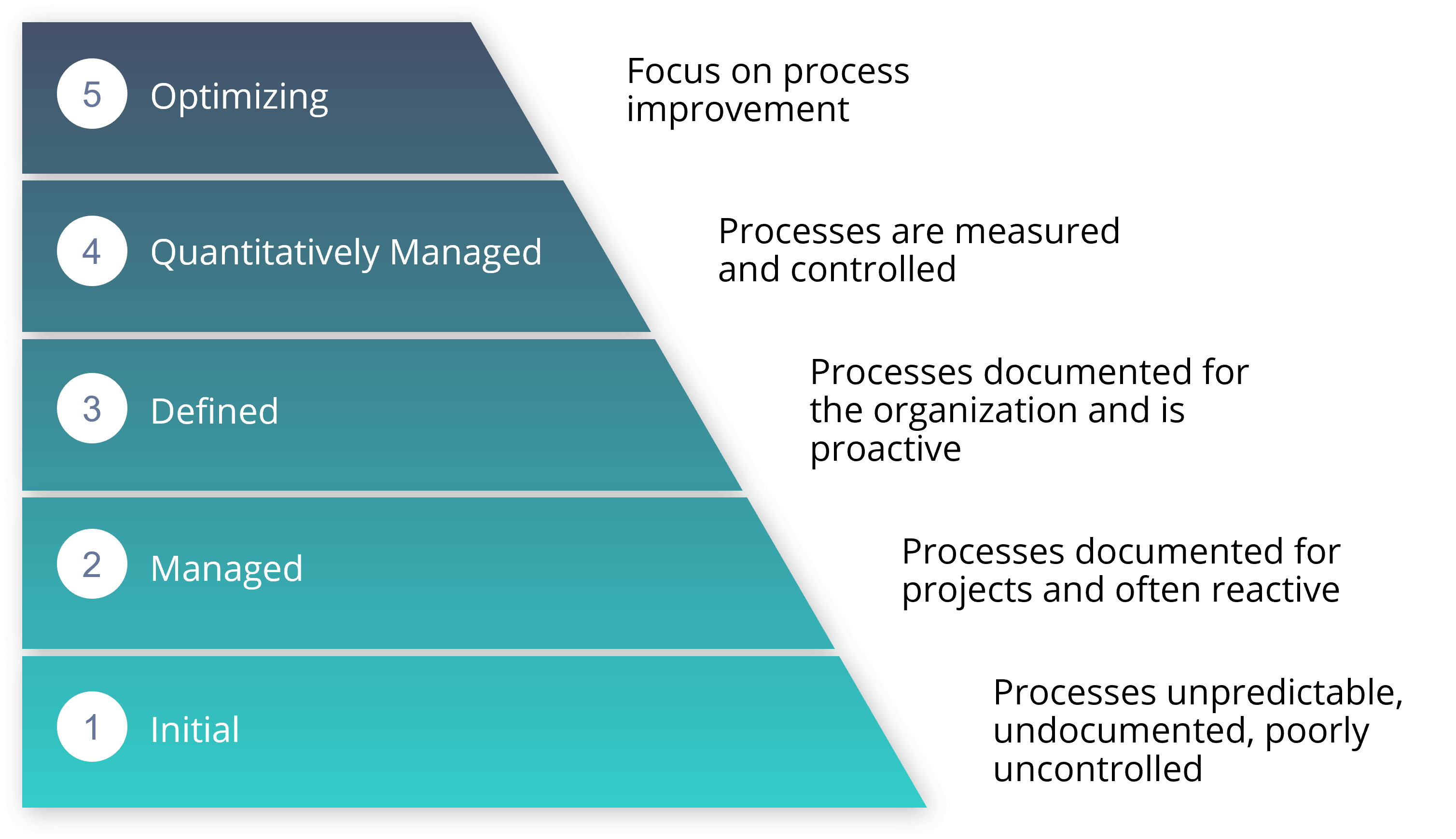Katya Linossi, Co-Founder and CEO
More blogs by this author
Katya Linossi, Co-Founder and CEO
More blogs by this author
I only recently came across the Microsoft 365 Maturity Model. It naturally caught my attention given my interest in maturity models. Maturity models provide a visual and simplified way to explain the "why" - in this case of Microsoft 365.
The Maturity Model for Microsoft 365 defines a set of business competencies aligned to Microsoft 365 but also underpin real business activities.
The Microsoft 365 Maturity Model was based on the Capability Maturity Model (CMM), which originally came out of work at Carnegie Mellon University in 1986 and focused on software development. The model has

This is the starting level for a new or untried process. Typically, they are undocumented and in a state of dynamic change, tending to be driven in an ad hoc, uncontrolled and reactive manner by users or events. This provides a chaotic or unstable environment for the processes.
Processes are documented or managed by a central group to enable (but not enforce) the preferred ways of doing them. Some processes are repeatable, possibly with consistent results. Process discipline is unlikely to be rigorous, but where it exists it may help to ensure that existing processes are maintained during times of stress.
The process is well defined and agreed as a standard business process. There are sets of defined and documented standard processes established, signed off and subject to some degree of improvement over time. These standard processes are in place. The processes may not have been systematically or repeatedly used to the extent needed for their users to become fully competent or the process to be validated in a range of situations.
The process is quantitatively managed in accordance with agreed-upon metrics. Effective achievement of the process objectives can be evidenced (using metrics) across a range of operational conditions. The suitability of the process in multiple environments has been tested and the process refined and adapted. Process users have experienced the process in multiple and varied conditions and are able to demonstrate competence. The process maturity enables adaptions to particular projects without measurable losses of quality or deviations from specifications. Process Capability is established from this level.
Process management includes deliberate process optimization/improvement. The focus is on continually improving process performance through both incremental and innovative technological changes/improvements. Processes are concerned with addressing statistical common causes of process variation and changing the process (for example, to shift the mean of the process performance) to improve process performance. This would be done at the same time as maintaining the likelihood of achieving the established quantitative process-improvement objectives.
Management of the processes includes deliberate and systematic process improvement/optimization. There is focus is on continual improvement through both incremental and innovative technological changes/improvements. The Optimizing level is likely to include automation, reduction in manual tasks and associated variability, strong governance and compliance interventions as well as optimization for user interactions and productivity.
Not every organization needs to be at the top level. Not every department, team or function needs to be at the same level. As with any organizational capability, the organization should decide if the capability should be a strategic differentiator or simply a basic operational capability based on the organizational strategy. The former may require optimized and fool proof capabilities, where the latter only requires relative efficiency.
Subscribe to our newsletter
This site is protected by reCAPTCHA and the Google Privacy Policy and Terms of Service apply.